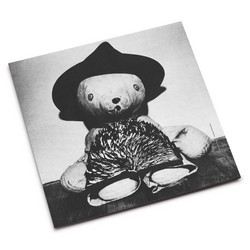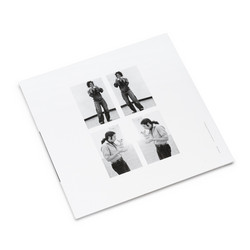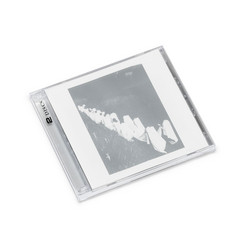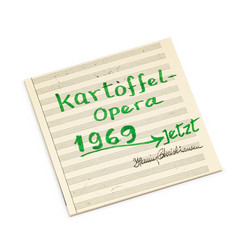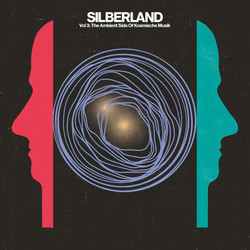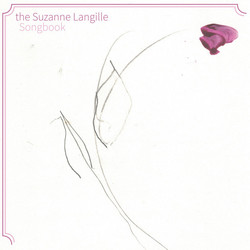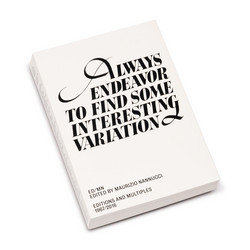Various
Records By Artists: 1958-1990
Records by artists is a catalogue raisonné, a book of about 500 records. The artist uses the record/vinyl medium, as a total project (cover, packaging, sound project) liberated from the music.
Since the 1960's, artists have increasingly experimented with recording sound as a means to investigate the possibilities of expression. Vigorously researched and documented, Records by Artists 1958-1990 is the catalogue to an exhibition curated by Giorgio Maffei at the Biblioteca Universitaria, Bologna in 2013. This illustrated compendium explores diverse artistic experiences using sound and audio storage media since its beginnings around 1960. Central to the interdisciplinary context of dematerialisation of the work of art, visual, literary, performance and other artists have increasingly experimented with the record and sound as a vehicle for investigating the possibilities of verbal and non-verbal expression, considerations of the body and avant-garde tendencies. Hundreds of examples are presented in this impressively researched and carefully documented and illustrated book.
The book includes work by Art & Language, Yves Klein, Bruno Munari, Yoko Ono, Dieter Roth, Joseph Beuys, Laurie Anderson, Karel Appel, Terry Fox, Brian Eno ...
.
"Since the late 1970s, researches on the border between art and music proliferated, as in the case of Laurie Anderson, Christian Marclay, Brian Eno, or The Poetics (band composed by Mike Kelley, Tony Oursler, and Jim Shaw): artists that wandered nimbly from the art gallery to the stage, often reaching a wide popularity, definitely far from the underground circuits.
.

In face of this increasing importance of audio storage media in art, and after more than thirty years from Celant’s text, in Italy such heterogeneous, tentacular and liminal panorama of projects has remained almost unexplored. Records by Artists (1960-1990) – an exhibition curated by Giorgio Maffei at the Biblioteca Universitaria in Bologna during Artelibro 2013 – aims to create the basis for a wide-ranging exploration of these practices. It makes this in cataloguing and encyclopaedic ways, and through a clear circumspection of the area of investigation.
.

The exhibition, in fact, originates from a research project that lead to catalogue 800 records by artists, later published in the homonym volume issued by Danilo Montanari Editore and VIAINDUSTRIAEedizioni About 300 pages that document an important part of artists’ vinyl production (other supports such as tapes and CDs are excluded) during three decades through sheets sorted alphabetically that reproduce the record cover and the record notes of each piece.
The collection ranges from Sound Environment Sea, an album of field-recordings by Marina Abramovic (1972), to conclude with the famous The Well-Tuned Piano (1987) and The Theatre of Eternal Music by La Monte Young, passing through performance artists such as Güinter Brus and Valie Export, sound poets such as Henri Chopin, conceptual project by Art & Language, Hanne Darboven, Dan Graham and Jan Dibbets, and composers such as Robert Ashley, Charlemagne Palestine and Steve Reich. Obviously, there are also some of the names traditionally connected to the horizon of expanded sound such as Christina Kubisch, Terry Fox, Christian Marclay, Maurizio Nannucci, as well as sections dedicated to collections, compilations and magazines – including REVUE OU and the multimedia magazine ASPEN, that during the last two years have been at the core of important monographic exhibitions
The exhibition presents a selection of 130 vinyl records in a minimal display setting, which places the records and the covers on the reading tables of the massive Aula Magna of the Library. The curatorial statement follows the catalogue principles through an alphabetical order of the records that doesn’t aim neither to an historical or chronological reconstruction, nor to a taxonomical categorisation based on tendencies, operational modalities or disciplines. Instead, the purpose is creating, as the curator claims, a “catalogue raisonné”
Hence the approach isn’t historiographical, critical, or theoretical. Rather, it is a methodical and classificatory project, which tends, in a heuristic way, to build a corpus of oeuvres based on medium-specificity (the use of the record as a support) through a wide-range investigation into the international arts practice, and that takes into account, while making it its own, also the problematicity of the same definition of “record by artist”. The exhibition is indeed a proper collection that, from the one hand, recalls the object of investigation (the record: collecting object par excellence) and, on the other, to the book and the catalogue.
.

According to Victor Stoichita, the catalogue “consists of a deployment following to an order (kata-logos). […] Unlike the inventory, a diachronic instrument, the catalogue is a synchronic fact. Any group of objects could be part of an inventory, but only one limited category allows (or requires) the catalogue: the collection”. In the case of Records by Artists, it is probably this circular relation (almost an overlapping one) between collection, catalogue and artworks on display that determines the main limit of the exhibition. In fact, differently from some previous Italian and international exhibitions on records, Records by Artists is not focused on the relationships between art and graphic design of the covers. And, for this reason, the fact that this important collection cannot be listened to significantly limits the fuition. In the book-catalogue the curator recalls, “The record by artist is not the explanation or the documentation of a sonic artwork. The record is the artwork”.
A work of which the cover and the apparatus are without a doubt an integral part, but that in any case is intended to come to life through listening. On display, instead, the only track diffused in the exhibition space is Parole / Mots / Words / Wörter by Maurizio Nannucci, a cut-up of voices and discourses published in 1976 and re-designed for this occasion, while in the other cases we can only experience the audio storage media – we may even say – instead of the artwork itself.
.

Also this choice seems to reaffirm the “catalo-graphic” character of the entire project. A project that, on the one hand, has the great merit of contributing to build a wide corpus of works and fertile lands for the investigation of this interdisciplinary and branching field, and, on the other, (re)launches to further explorations that may permit a direct drive on the present time. A present where, accomplice also a more generalised “techno-nostalgia”, the record is back in the spotlight of contemporary arts." Elena Biserna, Digicult
ISBN 9788897753087


